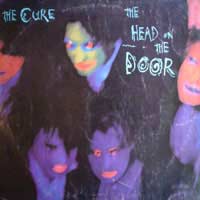The Cure- Rock Music to Pop

The Cure might well be the most influential cult band in the history of rock. Although many see them as a Goth group (in large part because of a dour period and the black hair and makeup of leader Robert Smith) they’ve never fitted easily into any single category. They’ve certainly qualified as Goth, but also released pop music, and began their careers with some post-punk angst. Their records have sold in millions on both sides of the Atlantic, and many bands have cited them as an influence. Whatever style they’ve adopted, however, Smith’s voice has remained instantly identifiable, and even after almost three decades they retain a huge fan base than now runs from people in their 40s down to teenagers.
The Early Years
Formed in 1976, the first version of the Cure didn’t record until late 1978, when they released Killing an Arab, very spare, literate piece of music inspired by Albert Camus’ novel, The Stranger. They followed that with an equally quirky album, Three Imaginary Boys, that was part post-punk, part intelligent pop music. However, that sound quickly took on darker tones after they added a keyboard player and made the dirge-like Seventeen Seconds, the start of a cycle that saw them producing very shadowed music for a couple of years and finding a home in the early Goth movement.Going Pop
After Smith took a break to work with Siouxsie and the Banshees, he returned with a new direction (and a change in the band’s personnel) and a brief change of style with the chart single The Lovecats. But the album that followed was as dark as anything that had gone before. It wasn’t until 1985, with The Head On The Door that the Cure’s new pop direction emerged fully formed, the album going into the top ten and spawning a pair of hit singles. More than that, the open sound helped really break the Cure in America, where they became college radio favourites, quickly establishing a very strong cult following.They built on that with Kiss Me, Kiss Me, Kiss Me, which was even more successful, an ambitious double LP that cemented their cult status. Never the biggest band in the world, they were solid in their support, with plenty of support from MTV and fans who would gladly follow whatever they did.
That gave them a free hand, and they used it on the multi-faceted Disintegration, which saw them even more popular before, a true stadium act for the first time. 1992’s Wish took them even higher, but it was followed by a three year hiatus, due in part to litigation with a former band member.
With that they lost momentum, which they’ve never really attempted to regain, issuing only two albums of new material in the decade since 1996 (along with two hits collections). It’s’ as if Smith, the only constant in the band, had decided to put the Cure on the back burner most of the time.
Whatever the reason, the band’s back catalogue remains as popular as ever, both in Britain and the U.S, a perennial favourite with the Goth crowd. From the beginning, whatever they’ve done, the Cure have never gone out of style.
- Dance Music, DJs and Nightclubs
- Raves, Techno, Hardcore and Trance
- The Beginning of MTV
- The Second Summer of Love
- The Smiths Were The Idols of Indie
- The Story of Rough Trade
- The Tube, TV Music Programme
- What is Ambient Music?
- C86 and the Indie Movement
- Charity Records
- Indie and the New Musical Express
- New Wave of British Metal
- The Gothic Music Movement
- New Romantics
- The Rise and Fall of Electro Music


Re: Bands in Hamburg
hitchhikers 65 they played there
Re: Lonnie Donegan
Lonnie is at once over-rated (he had a bit of a history of self-serving, e,g, adding his name to Woodie Guthrie's on composer credits), and…
Re: Bands in Hamburg
is there a list of bands that played during the sixties anywhere. I am looking for bobby Bobby and the blue diamonds
Re: Skiffle, Music of the Fifties
Hi , I am a bit of an avid car booter , collect and deal with all manner of interesting items online and have recently come…
Re: All About Gig Package Tours
I'm researching information about my late father-in-law, who used to play guitar in england, he often 'backed' or 'filled-in' for…
Re: The History of Britpop
I love this site however i thing it could do with some sort of Britpop facts in bullets points or whatever.
Re: Cliff Richard
Cliff's career has out lived many singers and bands over the past 55 years, Well done cliff
Re: T Rex- The Rock Band
"Shady politician in my bed Tying bolts of lightning to his head...." Who else but Marc could pull this style off! Marc and T-Rex's…
Re: Virgin Records - Richard Branson and Nik Powell
These days, of course, Virgin, both shops and label, are just a memory, but for those who bought music in…
Re: The Impact of Festivals on The Music Industry
Festivals are big business these days, and even if they don’t all make money, or some take a year off (like…